There's an easy way to test your DSLR camera to find its best low-light ISO performance.
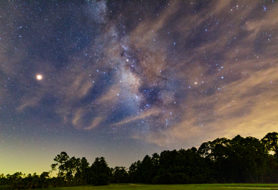
Richard S. Wright Jr.
There are few easier ways to start an argument than bringing up technical issues with astronomical imaging in mixed company. Scientists, engineers, technicians, and accountants all have different ways of looking at the world and technology. They can occasionally be territorial when it comes to the use of terms and concepts they feel they own and that belong to their discipline alone.
The question of which ISO is best and the other technical details I discuss in this blog can easily become quite contentious in some circles. The plain truth is that when you're trying to explain a complex topic, sometimes a simple approach really is good enough for the practitioner.
“Good enough” is often used as a slur from the pedantic purist, but there's a magic phrase that means the same thing and makes you sound smarter, like you’ve carefully considered all of the other facts that you're typically assumed to be ignorant of.
Here it is, are you ready?
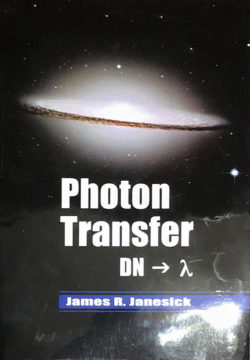
Richard S. Wright Jr.
Instead of saying, “It’s good enough,” say, “It’ll do for a first-order approximation.”
Suddenly, instead of being written off as an ignorant noob, you’ve read all of Janesick’s work, passed several physics exams, and have carefully evaluated your cost/benefit factors. Hey, you may even have done your own Photon Transfer Curve Analysis . . . but that’s okay, it’s not called for in these circumstances because it’s only a first order approximation!
Or, you can just say good enough and get lectured for hours on end by a well-meaning but overly obsessive pundit. Up to you.
By the way, a zero-order approximation is basically just an educated guess. When I advise someone to shoot at ISO 1600 or 3200 for astrophotography, that’s really just a zero-order approximation. This month, we're going to take that up a notch with just a little bit of data you can gather for yourself.
Recall from past blogs that changing the ISO does not really make your sensor more sensitive. Depending on your camera design, it might be sensor gain, it might be a simple digital scaling, or it might be a combination of both. I’m a software engineer, not a hardware guy, but the camera engineers I’ve spoken with all tell me that gain can usually be applied before some sources of read noise. When this happens, it gets the signal you want up and out of the read noise domain, which produces a cleaner, more appealing image, with the trade-off being some sacrificed dynamic range.
More ISO, Less Noise
This means that, contrary to common intuition, higher ISO actually can produce LESS noisy images (qualitatively speaking).
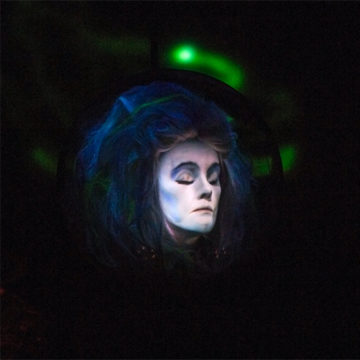
Richard S. Wright Jr.
For many traditional photographers, this statement makes no sense. But there are numerous sources of noise in an image. Electronic (read) noise is only one of them, and it’s not always the largest contributor. A more significant source of noise can be shot noise, and shot noise becomes more obvious the less signal you have. When you're shooting with a DSLR in a low-light environment such as a birthday party, you typically turn up the ISO in order to keep the shutter speed fast enough to avoid motion blur in your image. Well, a faster shutter speed means less light, and less light means a more significant proportion of shot noise. The laws of physics are making your low-light images noisy, not your high ISO.
The best low-light results come from having more exposure time to beat down the shot noise. In nightscape photography, this typically means a longer single exposure; for deep-sky imaging, it means stacking multiple exposures together. To remove shot noise from our evaluation we simply keep the exposure and aperture constant and only change ISO while taking a series of images. For example, I determined the best ISO to use with my Canon 5D Mark III at a dark-sky location using the techniques discussed last month for a nightscape shot. You can also do this experiment indoors in a dimly lit room.
Test It Out
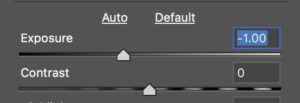
Richard S. Wright Jr.
I shot 10-second exposures at f/1.4 at all the ISOs from 100 up to 6400. Right out of the camera, the lower ISO images were naturally very dark and the higher ISO images were progressively brighter. The trick is to balance the images so that they are all at the same brightness, using the exposure control in Adobe Camera Raw; then you can clearly see the overall noise contribution compared to the signal in the image you want. I picked ISO 3200 arbitrarily as the reference image because it didn’t require any additional stretching to see well. When I brought the ISO 6400 image into Adobe Camera Raw, I adjusted the exposure by -1 stop. The ISO 3200 and ISO 6400 images looked pretty much identical. The ISO 1600 image I’d adjust by +1 stop, and the ISO 800 by +2 stops, etc. The image below is pretty telling. The photo taken at ISO 100 with the exact same amount of light is much noisier than the ISO 800 image.

Richard S. Wright Jr.
If you do this with your own DSLR, you will see either one of two possibilities. Either all of the images will look pretty much the same, or you'll see a definite decrease of apparent noise from the ISO 100 image, up until some point where the noise stops improving. If the images all look the same, you have what's commonly called an “ISO-less” or "ISO invariant" camera where ISO is nothing but a digital scale. If the noise drops, then your camera is ISO variant. Even ISO variant cameras will become invariant (ISO-less) at some point, and that's the ISO you want.
In my Canon 5D Mark III’s case, ISO invariance kicked in at ISO 3200, although it was hard to see the difference between the ISO 1600 and 3200 images. I also did this with my modified T3i, and it was hard to tell the difference between photos shot at ISO 800 and ISO 1600. As they say, your mileage may vary.
For the technically inclined, the read noise in an ISO variant camera is not actually decreasing . . . the camera is just pulling the signal and the read noise apart better though because of . . . <reasons>. For most readers, this really is just good enough! Qualitatively speaking, it's a less noisy image. Period.
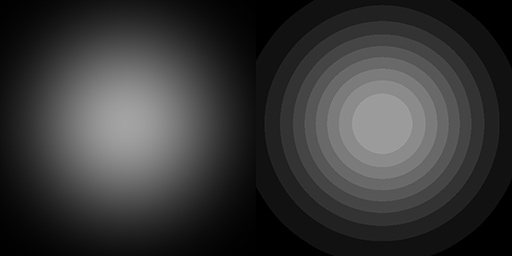
Richard S. Wright Jr.
What if your DSLR is ISO invariant? You can shoot at almost any ISO you want. Just remember that your image is still being digitally scaled from the values read off the sensor. High ISOs start compromising your dynamic range, and low ISOs will actually compress subtle differences which may start to clump together. In computer graphics we call this “banding,” or quantization (which is also partially responsible for the noisy appearance of photos taken at at low ISO settings in some cameras). So really, I’d shoot somewhere in the middle . . . say, ISO 1600 to 3200, and that’s probably . . . good enough.
 3
3









Comments
Stub Mandrel
September 21, 2018 at 4:16 pm
Richard, that's a brilliant article.
The best bit is the simple explanation of why low iso may not mean lowest noise.
You could also say it's an empirical approach - simply choosing the best ISO to use by experiment rather than extrapolating it from other measurements.
Another description might be 'near enough for jazz' 🙂
Neil
You must be logged in to post a comment.
gklocek
September 23, 2018 at 12:18 pm
For a Canon 6D DSLR, why not use "Unity Gain" = ISO 800, for AP.
If I use any ISO above Unity Gain, then I lose Dynamic Range - more high end pixels saturate = bad.
If I use any ISO below Unity Gain, then I lose image detail - more low end pixels are noisier = bad.
The ISO for Unity Gain is not subjective.
You must expose long enough to ...
a) Cleanly separate the Histogram from the left wall AND
b) Have a Histogram Peak between 25% - 33%
now the the Sky Fog will swamp the Read Noise.
The Histogram is not subjective
I use a fixed ISO and I change my exposure time to achieve a "proper" Histogram.
Every night is different ...
a) A different Focal Length
b) A different F-Ratio
c) A different Sky Fog
d) A different Deep Sky Object
d) A different Exposure Time
But, I always use the same ISO, with the same camera.
Any ISO other than Unity Gain changes the RAW images into a pre-processed Image.
Doesn't that defeat the whole purpose of a RAW Image file?
The above method is quick, easy and more objective ( less subjective than Adobe Camera Raw ).
Maybe, a second-order approximation?
The real question is ... Which method produces better AP images, after stacking?
You must be logged in to post a comment.
Richard S. Wright Jr.Post Author
September 23, 2018 at 12:57 pm
Thanks for chiming in. Pretty good additional advice over all. A little gain I feel is called for in my opinion though. As shown in the experiment (for ISO Variant DSLR's at least) it helps to separate the signal from read noise and fixed pattern noise (the fixed pattern noise is especially evident at low ISO's in dark areas). In my example, exposing for pretty much as long as you could, there was still significant noise detectable below ISO 3200 for this specific camera. For nightscapes and deep sky both, I also always use the same ISO. Yes, I sacrifice a little dynamic range, but I find the advantage, especially for nightscapes, of being able to take a single shorter exposure worthwhile. The dynamic range loss doesn't get too extreme until people start pushing the ISO much higher than this.
Even when the noise disappears in the sky fog, I have often found it reappears when I start stretching my data, moving the black point, and trying to bring out the fainter details.
You must be logged in to post a comment.
You must be logged in to post a comment.